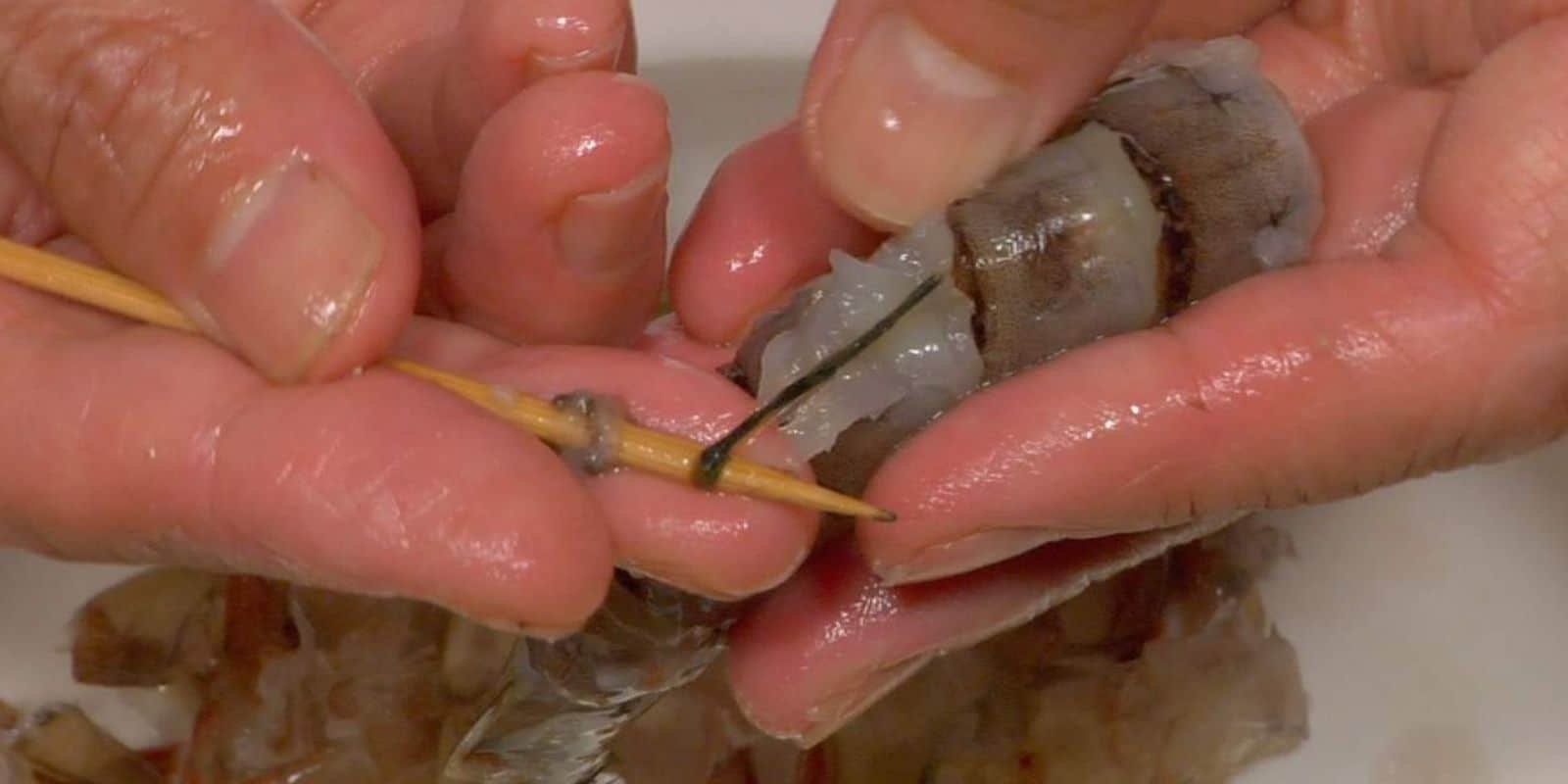Surprisingly, this is one of the most-searched questions about shrimp! It’s easy to be turned off by seafood when you see strange body parts, so let’s clear things up and get you back to enjoying tasty shrimp dishes.
As a seafood lover and amateur chef, I adore cooking with shrimp Their sweet, briny flavor pairs so well with pasta, tacos, curries, and more. However, I used to always notice a mysterious dark vein running along the underside of raw shrimp At first, it kind of grossed me out. Was it poop? Was it safe to eat? I had to get to the bottom of what this shrimp vein actually was all about.
After doing some research and talking to seafood experts I uncovered the truth about the dark shrimp vein. Keep reading to learn what it is whether you should remove it, and if it poses any health risks. I aim to demystify this shrimp part once and for all!
What Is the Dark Vein on Shrimp?
The thin, dark line that runs lengthwise down the underside of a shrimp is commonly referred to as the shrimp vein, intestinal vein, digestive tract, or dorsal vein. But what is it actually made of?
The shrimp vein consists of the crustacean’s digestive system, including its esophagus stomach hepatopancreas, intestines, and anus. So in simple terms, yes – it is indeed the shrimp’s poop chute!
Raw shrimp eat a diet primarily of algae, plankton, and small aquatic creatures. The dark color and gritty texture comes from this natural diet, including traces of mud and sand.
So now we’ve established that the shrimp vein is essentially the intestinal tract. The next question is – should you remove it before eating?
Is the Shrimp Vein Safe to Eat?
The good news is that the shrimp vein itself poses no real health risks. As long as the shrimp is fully cooked, any bacteria present in the digestive tract is killed off by the high cooking temperature.
However, some people prefer to remove the vein before cooking because it may have a slightly gritty, bitter taste. It’s a personal preference – neither right or wrong! Here are the pros and cons of eating around the vein:
Pros of Removing the Vein
- Eliminates any gritty bite from sand or mud
- Milder, sweeter shrimp flavor without bitterness
- More visually appealing presentation
Cons of Removing the Vein
- Time consuming preparation
- Risk of tearing flesh or losing meat
- Shrimp cook more quickly with vein intact
Overall, I usually devein my shrimp simply for better flavor and texture. However, it’s not imperative for safety.
How to Devein Shrimp
If you opt to remove the intestinal vein, it’s quite simple to do at home. Here are some tips:
- Use raw, shells-on shrimp for easy access
- Make a shallow cut along the back of the shrimp
- Use a paring knife or shrimp deveiner tool
- Gently lift out the vein using the tip of the knife
- Rinse the shrimp under cool water
- Pat dry with paper towels
It’s best to devein just before cooking the shrimp, as they will cook more evenly with the vein intact. Removing it after cooking makes the flesh prone to tearing.
For butterfly shrimp or dishes where presentation matters, deveining helps highlight the shrimp’s color and shape. But it’s still perfectly fine to cook and eat shrimp with the digestive tract still in place!
Common FAQs About the Shrimp Vein
Here are answers to some other common questions about the dark shrimp vein:
Is the vein the shrimp’s poop?
Yes! The vein is part of the intestinal tract where waste passes through.
Should I siempre buy deveined shrimp?
That’s up to you! Deveined shrimp saves time, but isn’t necessary.
What are the black spots on shrimp?
These are melanophores, pigment cells that help camouflage the shrimp. Harmless!
Does the vein run all the way through the shrimp?
No, it only runs along the back/top area, not the underside.
Can I get sick from the shrimp vein?
Nope! Just cook the shrimp fully to eliminate any bacteria concerns.
Do I really need to take the time to devein?
It’s optional! Removing offers better texture/flavor, but eats fine with vein intact.
Hopefully this article helped explain what that curious dark shrimp vein actually is, whether it’s safe to eat, and how to remove it if desired. Personally, I’m no longer freaked out by it after learning it’s a normal part of the shrimp anatomy! Now pass the shrimp scampi.

CertificationJoin the most recognised certification programme as proof of your responsible farming practices to a global audience.

Find what you are looking for Search:


